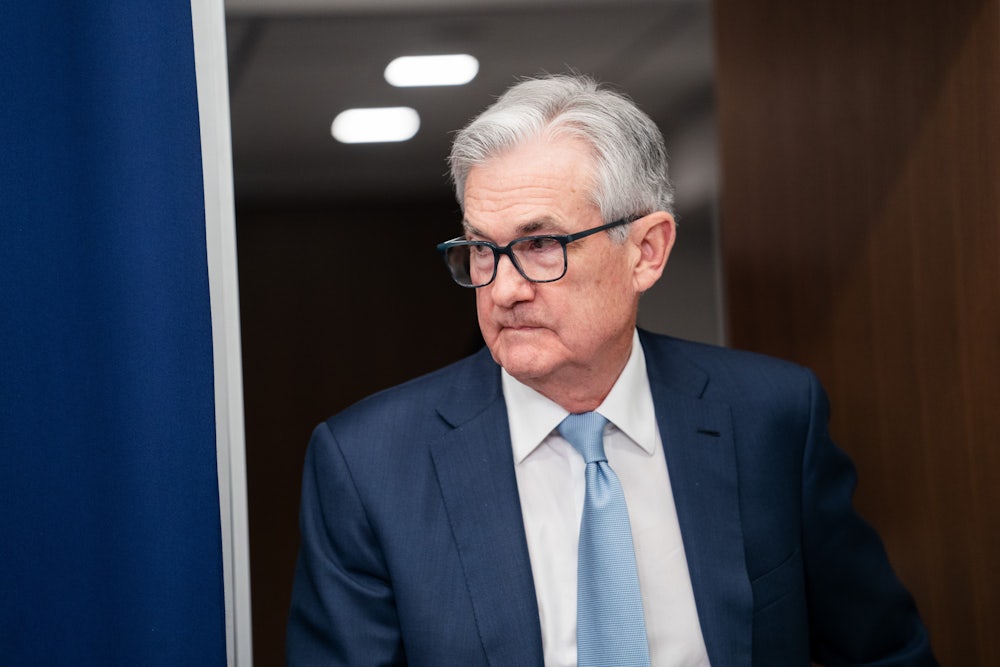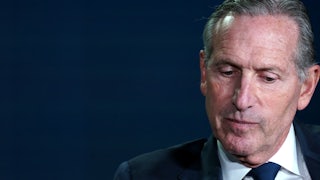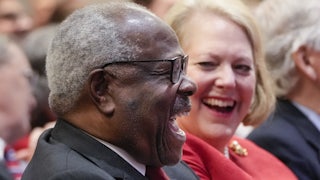If the 1970s were the decade of the Great Inflation, 2022 was the year of the Little Inflation. It was worse than many people expected, including me. But as the year ends, inflation is dwindling, and economic experts are starting to pay more attention to another indicator: the unemployment rate, in anticipation of a recession this spring. If that comes to pass, we’ll all look back nostalgically at the Little Inflation.
I don’t mean to minimize the inflation of the past year. My own moment of revelation came in November when I purchased a tall skim latte at Starbucks, glanced at the bill, and resolved to brew my own coffee for the rest of my life. But by then the consumer price index, or CPI, was coming down. The Fed’s preferred indicator for inflation, the personal consumption expenditures, or PCE, price index, actually peaked way back in June, at 7 percent over the previous year. It then fell gradually to 5.5 percent in November. During this same period, the “core” PCE (that is, the inflation rate minus volatile food and energy prices) was more or less flat. The core CPI is falling. Even recession hawk Lawrence Summers wrote this week that “inflation is coming down.”
This became evident before the November election, but too late to persuade voters. (I tried.) It was no surprise that 71 percent of Republican midterm voters rated inflation as the most important issue, but 28 percent of Democrats did too. Net Democratic losses in the House were smaller than they’d been in 20 years, and there were no net Democratic losses in the Senate. (We would have seen a net gain of one Senate seat if Kyrsten Sinema hadn’t decided after the election to become an independent.) Had voters been more aware that inflation was coming down, the Democrats might have kept the House.
The Little Inflation, like everything else in the economy since February 2020, was caused by the Covid-19 pandemic. Initially, the two-month recession that started in February of that year and ended in April created inventory surpluses. But those vanished as the economy recovered much more quickly than expected, and supply chain disruptions instead pushed prices up. Toilet paper was the earliest choke point because it was a bulky product that retailers didn’t like taking up too much space in their storerooms. That kept inventories low, and 70 percent of grocery stores were out by the end of March 2020. Then automobile prices shot up because their supply chains were especially complex and globalized.
The supply chain problem spread more broadly through the economy in 2021, and by January 2022 inflation officially became a crisis. In that month, a 7.5 percent CPI set off “holy shit” alarms because it was the highest 12-month increase since February 1982, when then Federal Reserve Chairman Paul Volcker was still busy clobbering the Great Inflation to death. Finally, in February Vladimir Putin decided to invade Ukraine, which made everything worse by boosting prices for oil and wheat. The Little Inflation was underway.
January’s inflation rate of 7.5 percent (the CPI eventually peaked in June at 9.1 percent) made it inevitable that Fed Chairman Jerome Powell, who’d been taking some criticism for not raising interest rates, would jack them up. In March, the Fed raised interest rates 0.25 percent; in May, it raised interest rates 0.5 percent; and in June, it initiated the first of four increases of 0.75 percent. Finally, in December, the Fed fell back to an interest rate of 0.5 percent, signaling that the Little Inflation was starting to wind down.
Throughout the Little Inflation, voices of doom (Niall Ferguson, for instance) said it was the 1970s all over again and the Little Inflation would become another Great Inflation, a condition that Aaron Timms, writing in The New Republic, called “nostophobia.” Nostophobia was catnip for Republican strategists, who were looking to expand the GOP’s working-class constituency (as indeed they did) and needed something a little meatier to run on than gender pronouns. Long-standing nonsensical caricatures of the Democrats as the Mommy Party and Republicans as the Daddy Party (the coinage is Chris Matthews’s) predisposed voters to think that Republicans were better than Democrats at managing the economy. As many people, including myself, have demonstrated, the opposite is true. Daddy talks a good game, but Mommy (the Democrats), by just about every metric, manages the economy more effectively.
Especially piquant is the statistic that 13 of the past century’s 17 recessions began under Republicans, including all the big ones. A recession hasn’t begun while a Democrat was in office since Jimmy Carter was president. The economy contracted for two consecutive quarters at the start of this year, which usually defines a recession, and even before that the business press started crapping on President Joe Biden for initiating one. But a consensus eventually emerged that we weren’t in a recession, because consumption was robust, unemployment was low, and wages were rising.
Still, give Republicans their due. Since the 1940s, they’ve taken the lead in destroying the labor movement, and by 1990 it was more or less dead. This has been terrible for the economy in all sorts of ways, and bad for the country in noneconomic ways too. But turning organized labor into a smoking ruin pretty much guaranteed there would be no extended wage-price spiral as there was in the 1970s, and so there wasn’t. Largely for the same reason, we didn’t see a return to the freakish “stagflation” of the 1970s that Larry Summers and others were predicting last spring.
That’s the good news. The bad news is that if there is a recession in 2023, as everybody is predicting, then the recovery will take a long time to reach ordinary working people. When it does, their wages will likely rise only a very little bit. That’s how it went after the three recessions that preceded the Covid recession of 2020, and that’s the way it tends to go when workers have no power.
The vulnerability of workers in the richest country the world has ever known never really stopped being the country’s biggest economic problem, even as the Little Inflation captured everyone’s attention. If the economy tanks in 2023, we’ll be talking once again about economic inequality. But don’t hold your breath that Congress will do anything about it. It had its chance for two years while Democrats controlled the White House and (narrowly) both houses of Congress. But despite support from President Joe Biden, the Protecting the Right to Organize Act and various tax hikes on high incomes and inherited wealth went nowhere. Yes, Democrats made a little progress on taxing corporations. But much more needs to be done, and none of it will happen while Republicans control the House. Still, you won’t hear even Republicans talk very much in 2023 about the inflation threat. That’s a blessing.






